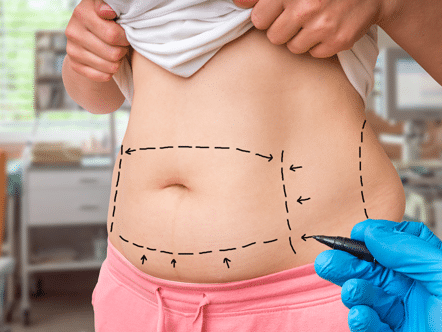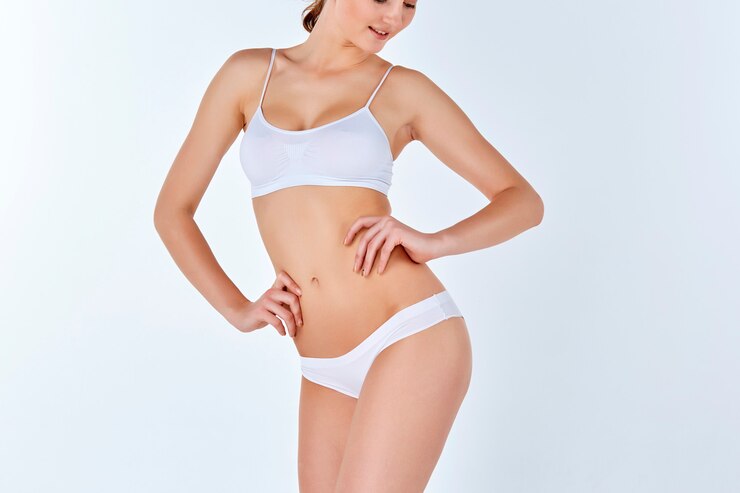Body contouring is a popular and effective way to reshape and tone various areas of the body, enhancing natural curves and addressing concerns like excess fat, sagging skin, and uneven body proportions. With both surgical and non-surgical options available, Body Contouring Treatment In Dubai can cater to a wide range of goals and preferences. Here, we’ll explore the different types of body contouring treatments, how they work, and what to consider when choosing the right option.
What is Body Contouring?
Body contouring involves a variety of procedures aimed at enhancing the shape, tone, and definition of the body. While some treatments focus on removing excess fat, others are designed to tighten skin, smooth cellulite, or contour specific areas like the arms, thighs, and abdomen. Body contouring is often used after significant weight loss, as part of a post-pregnancy body regimen, or simply to achieve a more sculpted look.

Types of Body Contouring Treatments
There are multiple types of body contouring treatments available, categorized into non-surgical, minimally invasive, and surgical options. Each has unique benefits, making it essential to understand how each type works.
Non-Surgical Body Contouring
Non-surgical treatments are ideal for individuals who prefer a less invasive approach with minimal downtime. These treatments are often effective for mild to moderate fat reduction and skin tightening, but results may require multiple sessions for optimal outcomes.
CoolSculpting (Cryolipolysis)
CoolSculpting, or cryolipolysis, freezes fat cells in targeted areas, which are then naturally eliminated by the body over time. Common areas for treatment include the abdomen, thighs, and flanks. It’s a painless procedure with minimal downtime, making it a convenient option for those with a busy lifestyle.
Ultrasound Fat Reduction
Ultrasound-based treatments like Ultrashape or Liposonix use sound waves to break down fat cells in targeted areas, which are then flushed out by the body. These treatments are effective for smaller areas and can be used on the abdomen and thighs.
Radiofrequency (RF) Treatments
Radiofrequency body contouring, such as TruSculpt or Thermage, uses controlled heat to target fat cells and promote collagen production, which tightens and smooths the skin. It’s commonly used for areas like the abdomen, thighs, and arms, and is also beneficial for reducing mild skin laxity.
Laser Lipolysis (SculpSure)
Laser lipolysis, or laser-assisted fat reduction, utilizes laser energy to heat and destroy fat cells. The body gradually absorbs these cells over time. Laser lipolysis is effective for stubborn fat areas such as the flanks and thighs, with results that develop gradually over several weeks.
Minimally Invasive Body Contouring
Minimally invasive treatments offer more significant results than non-surgical options with only a slight increase in recovery time. They use small incisions and various energy-based technologies to target fat and stimulate skin tightening.
Laser-Assisted Liposuction
Laser-assisted liposuction, such as SmartLipo, uses a small laser fiber inserted through a tiny incision to liquefy fat, making it easier to remove. This treatment provides a mild skin-tightening effect, making it suitable for individuals looking for both fat reduction and skin firming in areas like the abdomen, arms, or thighs.
Radiofrequency-Assisted Lipolysis (BodyTite)
BodyTite is a radiofrequency-assisted lipolysis procedure that uses a thin probe to deliver heat energy to both the skin’s surface and the underlying fat layer. It melts fat cells while stimulating collagen, resulting in a firmer, smoother appearance. BodyTite is commonly used for the abdomen, arms, and thighs.
Surgical Body Contouring
Surgical body contouring procedures are the most invasive but offer the most dramatic and long-lasting results. These procedures are ideal for individuals with excess fat, skin, or muscle laxity that cannot be addressed with non-surgical or minimally invasive options.
Liposuction
Liposuction is a well-known surgical fat reduction technique in which a small tube (cannula) is inserted through incisions to remove fat. Liposuction is effective for almost any area of the body, including the abdomen, thighs, arms, and back. While results are immediate, there is a recovery period of several weeks.
Tummy Tuck (Abdominoplasty)
A tummy tuck, or abdominoplasty, removes excess skin and fat from the abdomen while tightening the abdominal muscles. This procedure is highly effective for individuals with loose abdominal skin or weakened muscles after weight loss or pregnancy. The results are long-lasting, though recovery may take several weeks.
Body Lifts (Arm Lift, Thigh Lift, Butt Lift)
Body lifts focus on removing excess, sagging skin and fat from specific areas. An arm lift (brachioplasty) targets the upper arms, a thigh lift contours the thighs, and a butt lift shapes the buttocks. These procedures are commonly chosen by individuals who have experienced significant weight loss and have loose skin.
Benefits of Body Contouring
Body contouring offers both physical and emotional benefits, enhancing overall appearance and boosting confidence.
Enhanced Physical Appearance
Body contouring can improve body proportions, smooth out bulges, and create a firmer, more defined shape in specific areas. Many individuals find these changes improve their confidence and self-image.
Increased Comfort
Reducing excess fat and skin can make daily activities more comfortable, especially in areas prone to chafing or discomfort, such as the thighs or abdomen.
Long-Lasting Results
When combined with a healthy lifestyle, body contouring can provide long-lasting results. Surgical procedures, in particular, produce permanent changes, as removed fat cells do not grow back.
Risks and Considerations
Like any cosmetic procedure, body contouring comes with some risks and requires careful consideration.
Potential Side Effects
Common side effects of non-surgical treatments include temporary redness, swelling, or discomfort, while minimally invasive and surgical procedures carry risks such as infection, scarring, or anesthesia-related complications.
Realistic Expectations
While body contouring can produce dramatic improvements, it’s essential to have realistic expectations. Results may vary based on the individual’s body type, treatment type, and overall goals.
Cost and Recovery
Costs vary significantly based on the treatment type and provider. Non-surgical treatments are generally less expensive but may require multiple sessions. Surgical options involve higher costs and longer recovery periods, but results are typically more substantial and permanent.
Choosing the Right Body Contouring Treatment
Selecting the right body contouring treatment depends on personal goals, body type, and comfort level with downtime and invasiveness.
Consultation with a Qualified Provider
A consultation with a board-certified provider can help determine which treatment aligns best with your goals. During this consultation, you’ll discuss your medical history, body type, and specific areas of concern.
Consideration of Budget and Downtime
Understanding each procedure’s costs and recovery requirements can help you make an informed decision. While non-surgical treatments may seem more convenient, they may require multiple sessions and might not provide the same results as a single surgical procedure.
Long-Term Commitment to Results
Maintaining body contouring results requires a healthy lifestyle, including a balanced diet and regular exercise. Though treated fat cells are removed, untreated areas can still accumulate fat if weight is gained.
Conclusion
Body contouring offers a wide range of solutions for achieving a more sculpted and refined appearance. With options ranging from non-invasive treatments to surgical procedures, there’s a body contouring approach suited to different preferences and goals. By understanding the types, benefits, risks, and choosing a qualified provider, you can make informed decisions that align with your vision for an enhanced body contour.





Comments